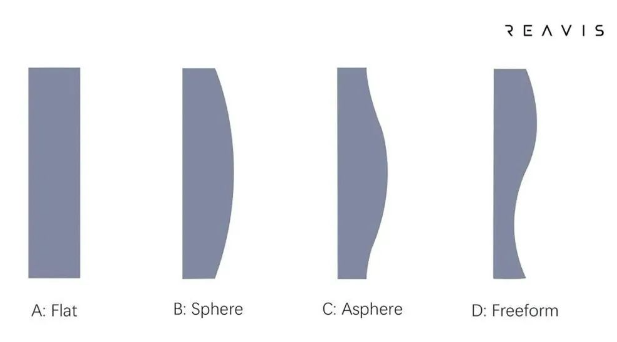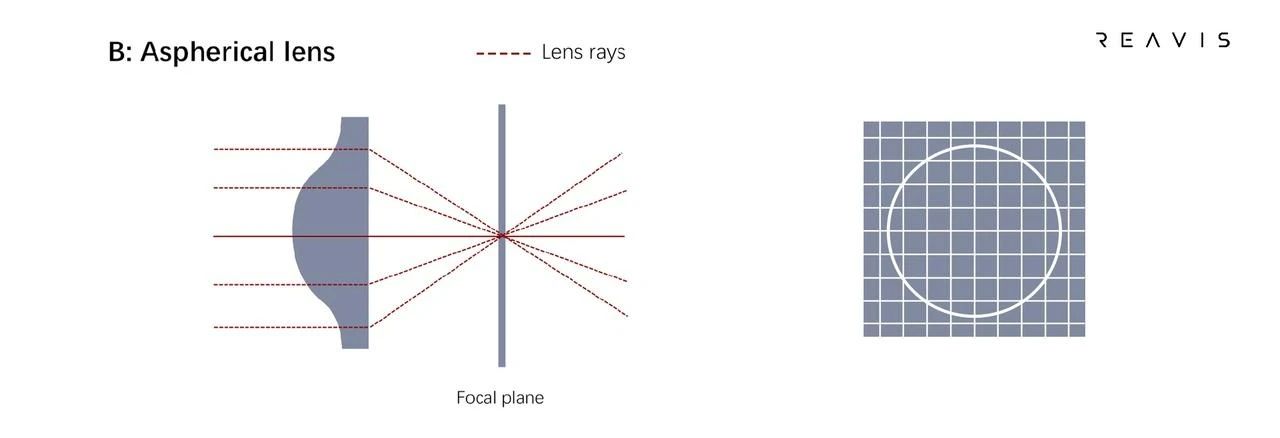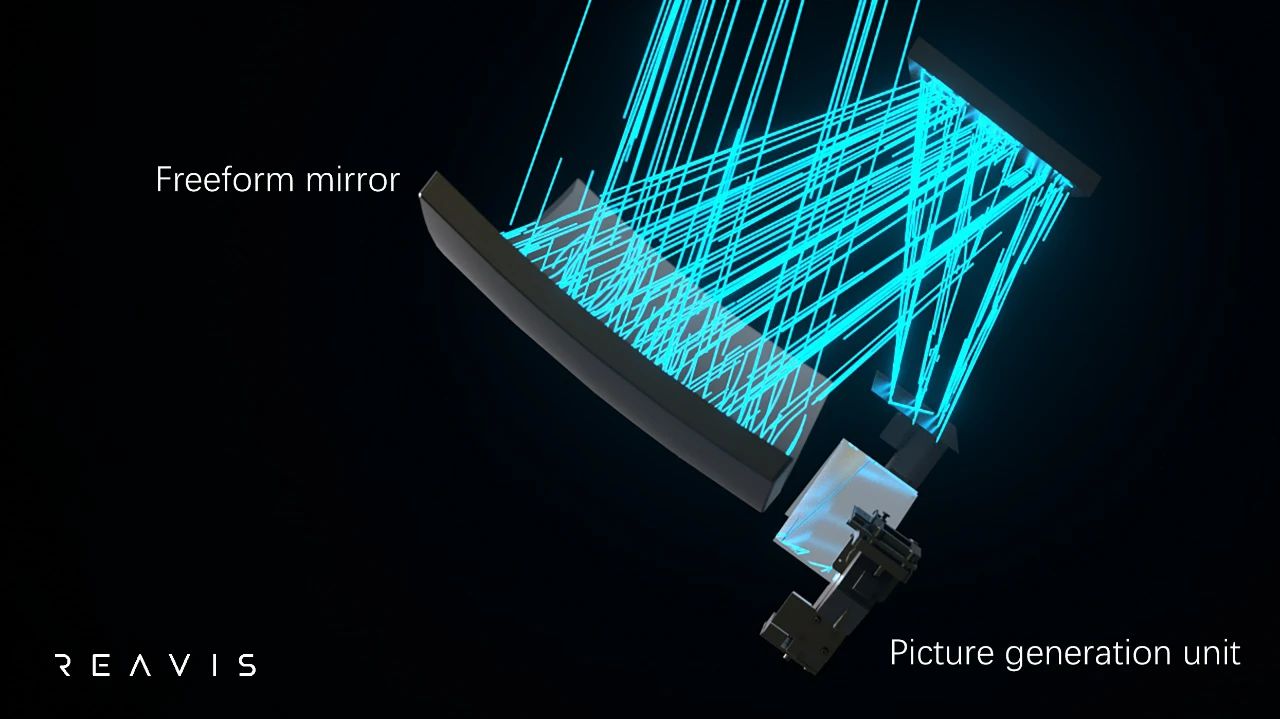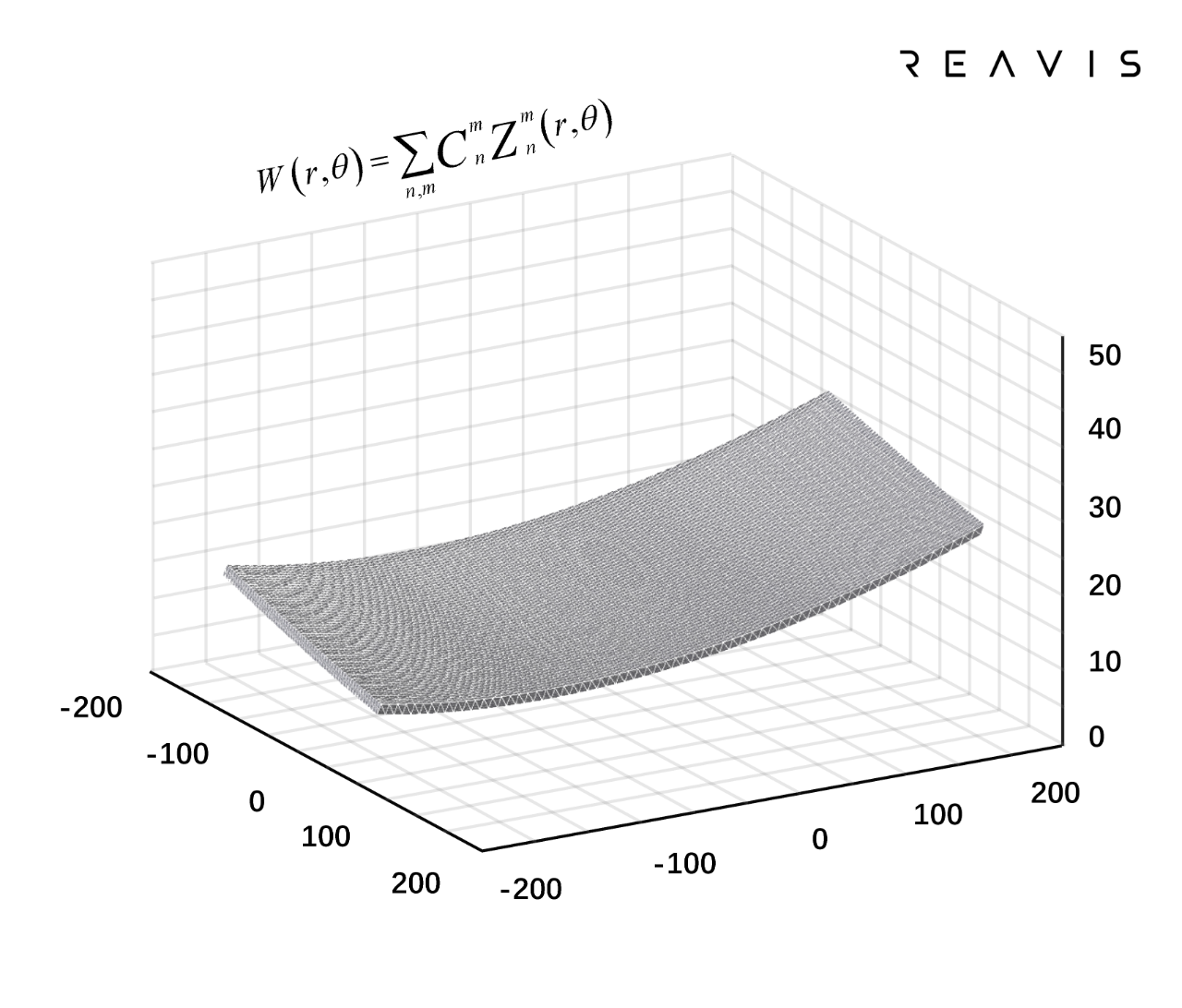In this issue, we will introduce an important optical component in HUD—freeform surfaces. Freeform surfaces are a type of optical surface. Before formally introducing them, let's first understand the two traditional types of lenses: spherical lenses (Figure (1)(B)) and aspheric lenses (Figure (1)(C)).

Spherical lenses are a fundamental type of optical surface widely used in devices such as fingerprint scanners, levels, and telescopes. These lenses have a spherical curvature, and their cross-section in the vertical direction is also curved. The curvature at each point on the surface of a spherical lens is equal. When light rays parallel to the optical axis enter different positions on a spherical lens, the focal point of the rays near the lens edge is closer to the lens than that of the central rays, as shown in Figure (2). This phenomenon, caused by the shape of the lens surface, where light rays cannot converge to a single point on the focal plane, is called spherical aberration. Spherical aberration leads to a decrease in imaging clarity. The difference between actual and ideal imaging in optical systems is called aberration, and the aforementioned spherical aberration is one type of aberration.

Compared to spherical surfaces, the general term "aspheric" refers to surfaces that cannot be defined by spherical geometry, meaning that the curvature varies across the surface. When we talk about aspheric surfaces, we usually refer to surfaces where the curvature changes continuously from the center to the edge and is generally rotationally symmetric. Common examples include paraboloids, hyperboloids, and ellipsoids.
Compared to traditional optical systems using spherical lenses, aspheric lenses offer greater flexibility in correcting aberrations due to their freedom in shaping. As shown in Figure (3), after special design, such aspheric lenses used in camera lenses can focus light rays to a single point on the focal plane when they strike the surface of the lens, resulting in imaging closer to the ideal.

When optimizing an optical system with aspheric surfaces, excessive optimization coefficients may not fundamentally improve the performance of the optical system. Therefore, to achieve better imaging effects, the development from aspheric to freeform surfaces is inevitable.
Definition of Freeform Surfaces
Freeform surfaces generally refer to optical surfaces without constraints of axial rotational symmetry or translational symmetry, with complex mathematical representations and high design requirements. As freeform surfaces can be composed of asymmetric, irregular, and complex shapes, in a broad sense, they can be any shape of surface[1]. Compared to traditional spherical and aspheric optical elements, freeform surfaces offer greater "design" freedom, allowing for finer control of parameters such as the angle and direction of light emission according to requirements.
Applications of Freeform Surfaces
Optical freeform surfaces not only achieve functions in optical systems that are difficult to achieve with traditional spherical or aspheric surfaces alone but also require fewer components, making the entire optical system smaller, lighter, and more efficient, meeting the demands of modern optical systems for high performance, lightweight, and miniaturization[2]. Therefore, optical freeform elements have wide applications in various fields, mainly divided into three aspects: imaging, illumination, and display.
In the imaging field, freeform surfaces are widely used in astronomical observations and space optical systems[3], and some smartphone lenses now incorporate freeform surfaces to achieve automatic distortion correction effects (as shown in Figure (4)). In the illumination field, freeform surfaces play an important role in the structural design of streetlights and car headlights, increasing the effective illumination range and improving energy utilization[4]. In the display field, freeform surfaces play an indispensable role in systems such as head-mounted displays and micro-projectors[5].

The design of freeform surfaces can be applied to transmissive lenses as well as reflective lenses. For example, the freeform surfaces commonly used in HUD are reflective (as shown in Figure (5)). For HUD, the optical design requirements are quite complex. Firstly, it needs to enlarge the image of the optical engine to meet the requirements of the Field of View (FOV) while projecting it to the corresponding Visual Image Distance (VID). Secondly, it needs to consider the clarity of the imaging, achieving a high level of resolution. Thirdly, it needs to match the shape of the car's windshield, controlling parameters such as static distortion, dynamic distortion, and binocular disparity of the image at a relatively low level. Moreover, based on the above three points, through the design of freeform surfaces, it is possible to eliminate HUD ghosting.
It can be seen that for such complex design requirements, existing spherical or traditionally symmetric aspheric surfaces are already difficult to meet. There is a need to introduce freeform surfaces with higher design freedom, but this also poses higher requirements on optical design capabilities. Figure (6) shows a physical image of freeform surfaces in a HUD.


Design of Freeform Surfaces
In the optical path design of HUDs, there are various forms of expression for freeform surface shapes, with the overall goal of achieving the imaging quality of the HUD optical system to meet design objectives. Among the more common representations are freeform surfaces characterized by Extended Polynomials (as shown in Figure 7) and those represented by Zernike Polynomials (as shown in Figure 8).


There is no inherent superiority or inferiority between representation methods, but there are some differences in their usage scenarios. For example, the extended polynomial is the most commonly used expression for freeform surfaces in optical software. It offers high degrees of freedom and can be used for surface representation in computer numerical control (CNC) machining, but it does not have a direct correspondence with aberrations. On the other hand, Zernike polynomials provide a more direct relationship with aberrations, allowing for selective optimization of individual aberration coefficients during the optimization process to better meet design requirements.
The production of freeform optical lenses presents greater challenges due to their extremely high design freedom, relying more on high-precision manufacturing technologies. In the next article, we will introduce the evaluation criteria and inspection methods for freeform surface manufacturing and its processes.
#Reference:
[1]Wills S. (2017). "Freeform optics: notes from the revolution". Optics& Photonics News. 28(7): 34-41.
[2]https://opticsjournal.net/Articles/OJ13d563a251e373b0/FullText
[3]Meng Q Y, Wang H Y, Liang W J. (2019). "Design of off-axis three-mirror systems with ultrawide field of view based on an expansion process of surface freeform and field of view". Applied Optics. 58(3): 609-615.
[4]Wei S L, Zhu Z B, Fan Z C. (2019). "Multi-surface catadioptric freeform lens design for ultra-efficient off-axis road illumination". Optics Express. 27(12): A779-A789.
[5]Bian Y X, Li H F, Wang Y F. (2015). "Method to design two aspheric surfaces for a wide field of view imaging system with low distortion". Applied Optics. 54(27): 8241-8247.